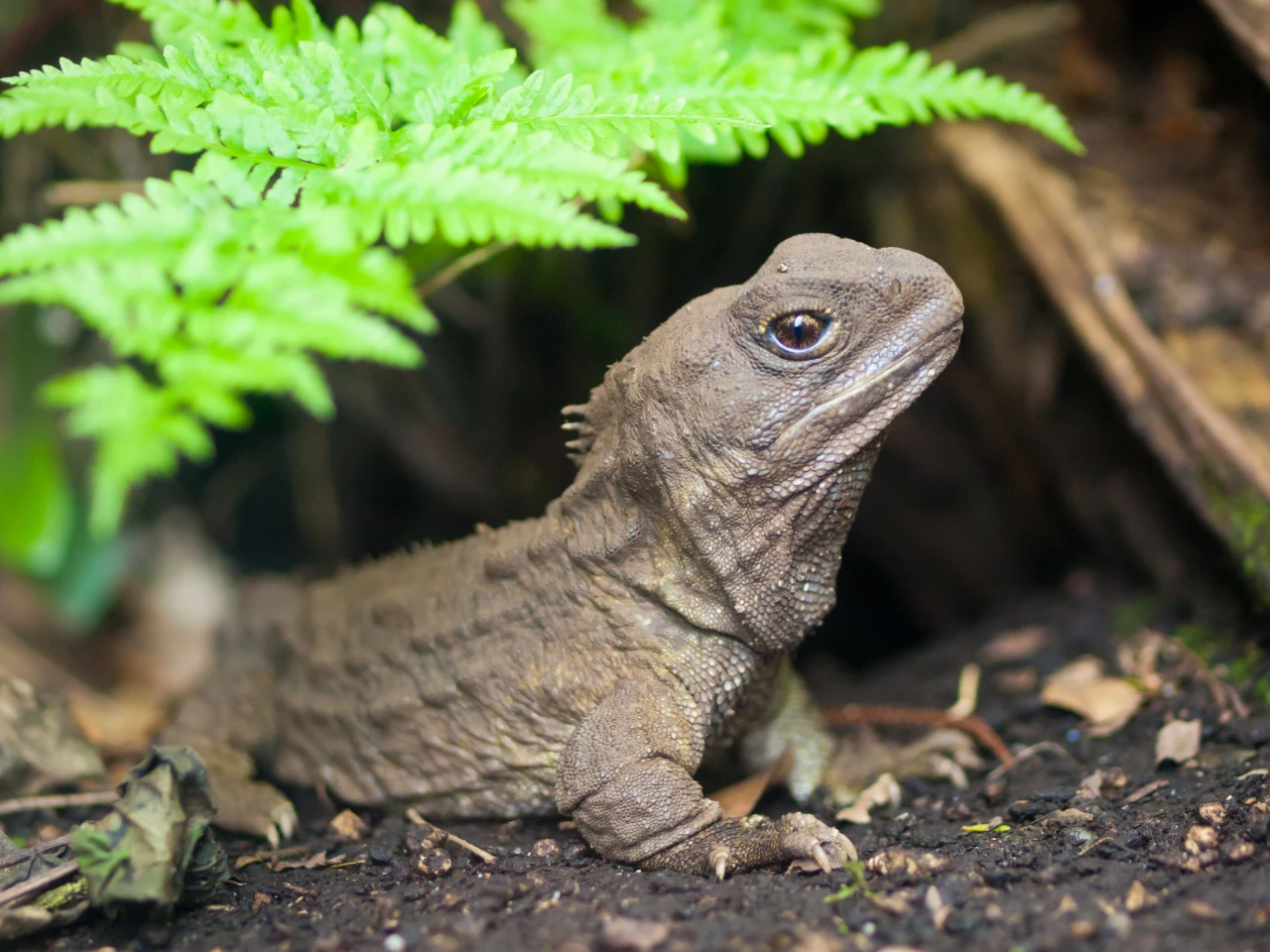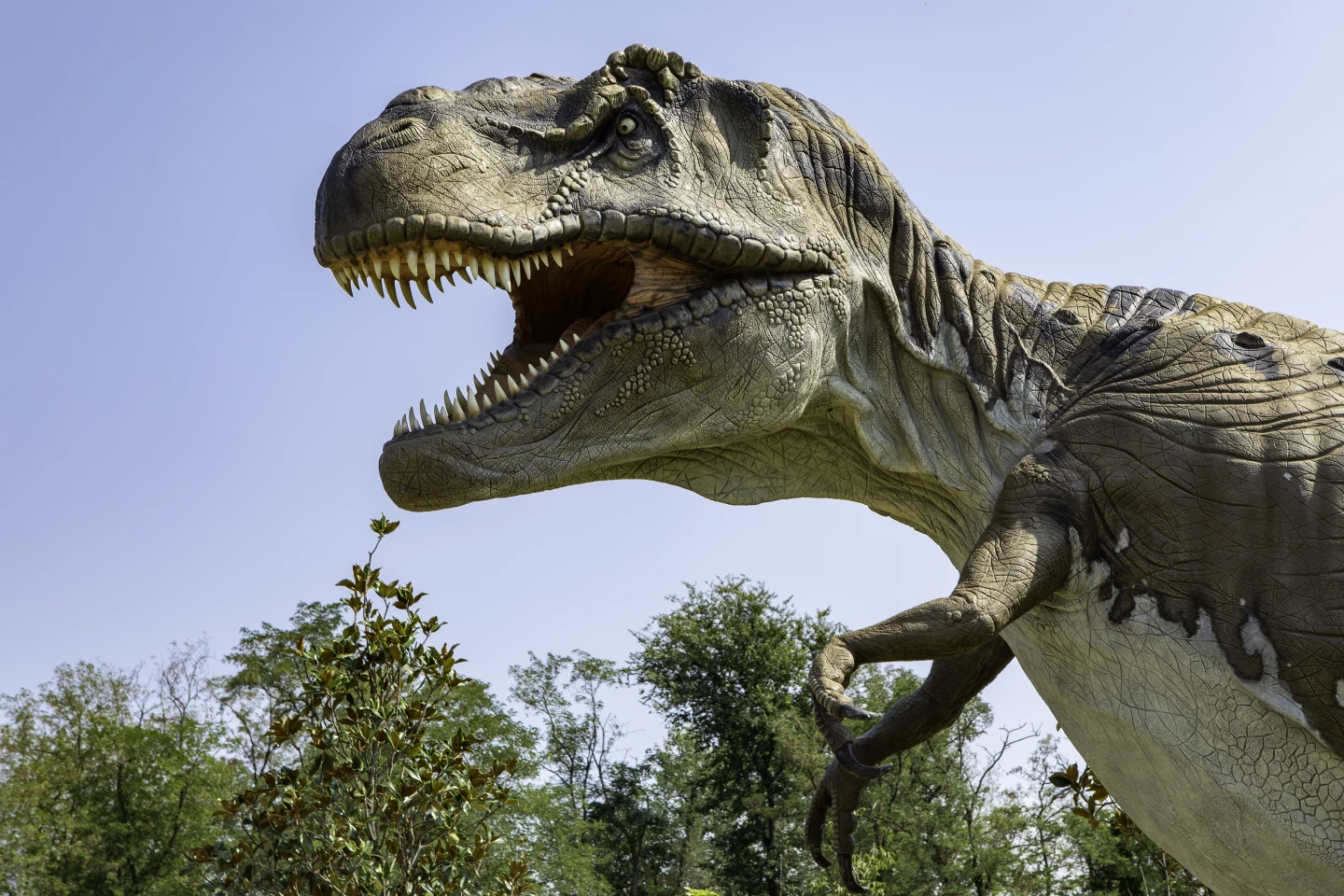With a revelation that threatens to ruin some childhood toys or a Jurassic Park rewatch, paleontologists have given one of the most famous dinosaurs a facelift, proposing that the Tyrannosaurus did not sport ferocious, protruding chompers, but proportionally sized teeth concealed by a set of scaly, lizard-like lips.
In a new study out of the University of Portsmouth, an international team of researchers studied the jaw morphology, tooth structure and dental wear patterns of lipped and lipless reptiles, and found that theropod mouths looked and functioned more like those of lizards than of crocodiles, as previously thought.
“Although it’s been argued in the past that the teeth of predatory dinosaurs might be too big to be covered by lips, our study shows that, in actuality, their teeth were not atypically large,” said study leader Thomas Cullen, assistant professor of paleobiology at Auburn University. “Even the giant teeth of tyrannosaurs are proportionally similar in size to those of living predatory lizards when compared for skull size, rejecting the idea that their teeth were too big to cover with lips.”
In fact, the scientists believe their mouth structure resembled a tuatara, the small extant New Zealand lizard-like reptile that was around at the time of the dinosaurs. It also had a lot in common with some lizards, none of which were close relatives of the theropods.

“It’s quite remarkable how similar theropod teeth are to monitor lizards,” said study co-author Derek Larson, Collections Manager and Researcher in Palaeontology at the Royal BC Museum in Canada. “From the smallest dwarf monitor to the Komodo dragon, the teeth function in much the same way. So, monitors can be compared quite favorably with extinct animals like theropod dinosaurs based on this similarity of function, even though they are not closely related.”
The study points out that the dinosaurs’ skulls and teeth were relative in size to those of modern lizards with lips. Also, examining fossils, scientists found that the holes in the theropod jaws that would have housed nerves and blood for mouth tissue were far more like those in a lizard than of a crocodile.
“As any dentist will tell you, saliva is important for maintaining the health of your teeth,” said co-author Kirstin Brink, assistant professor of paleontology at the University of Manitoba. “Teeth that are not covered by lips risk drying out and can be subject to more damage during feeding or fighting, as we see in crocodiles, but not in dinosaurs.
“Dinosaur teeth have very thin enamel and mammal teeth have thick enamel (with some exceptions),” she added. “Crocodile enamel is a bit thicker than dinosaur enamel, but not as thick as mammalian enamel. There are some mammal groups that do have exposed enamel, but their enamel is modified to withstand exposure.”
While the study offers fresh insights into how the animals may have fed and maintained dental health, it also offers evolutionary ecologists some exciting new avenues of exploration and artists the option of going back to the drawing board.
“Dinosaur artists have gone back and forth on lips since we started restoring dinosaurs during the 19th century, but lipless dinosaurs became more prominent in the 1980s and 1990s,” said co-author Mark Witton from the University of Portsmouth. “They were then deeply rooted in popular culture through films and documentaries – Jurassic Park and its sequels, Walking with Dinosaurs and so on.

“Curiously, there was never a dedicated study or discovery instigating this change and, to a large extent, it probably reflected preference for a new, ferocious-looking aesthetic rather than a shift in scientific thinking,” he added. “We're upending this popular depiction by covering their teeth with lizard-like lips. This means a lot of our favorite dinosaur depictions are incorrect, including the iconic Jurassic Park T. rex.”
The research was published in the journal Science.
Source: University of Portsmouth
Update (April 6, 2023): This story originally stated that the tuatara had a direct lineage from the dinosaurs. As some helpful readers have pointed out, this is incorrect. The article text has been updated to reflect this. Our apologies for the error.







